About Laparoscopic Gallbladder Removal
Laparoscopic gallbladder removal is a very safe procedure. It is the preferred method for treating this condition. Laparoscopic interventions provide many advantages over open surgery. First of all, the laparoscopic surgery causes much less discomfort due to the fact that the incisions are smaller and thus quicker to heal. The recovery time is notably shorter as well as return to full functionality. Internal scarring is also a lesser risk when it comes to this type of procedure.
However, a laparoscopic procedure performed on the bile duct is rarely conducted by a biliary surgeon. This is due to the high technical requirements of this method. The bile duct can be found in the abdomen which makes for a long and large incision. This incision is considered to be the main cause of discomfort in the recovery phase. The recovery itself can last as long as 12 weeks. In most patients, hospitalization is also advisable.

This procedure requires expertise in advanced laparoscopic techniques as well as complex biliary procedures. These are usually performed in centers specialized for laparoscopic methodology, with a focus on issues pertaining to the gallbladder.
Bile Duct Surgery
Laparoscopic common bile duct exploration is a process that removes stones in the bile duct. Patients suffering from gallstones may have smaller stones that pass from the gallbladder into the bile duct. These can cause obstructions leading to the development of jaundice and pancreatitis (inflammation of the pancreas). In this case, the gallbladder will have to be removed so as to treat the condition.
Many patients experience a case of spontaneous excretion of the stone into the intestine. This may require for some additional removal interventions in addition to the gallbladder operation.
A laparoscopic bile duct bypass treats the condition where the bile drainage is blocked causing bile accumulation in the blood. A common complication resulting from this condition is jaundice. An inflammation of chronic pancreatitis can result in narrowing of the lower bile duct. A surgical bypass procedure can be applied to treat this condition, restoring the normal bile flow.
Appearance of Choledocal Cysts
Another condition pertaining to this area is the appearance of choledocal cysts. This is caused by abnormal dilatation of the bile duct. This can again develop into jaundice, pancreatitis and cancer if untreated. Experts recommend an immediate removal of the cyst. After the procedure, the bile duct is sutured to the intestine. This restores the normal bile flow. A laparoscopic procedure can also be applied to remove the cyst.
- In our experience, most cases of choledochal cyst (64.6%) were diagnosed after the first decade of life. This increased incidence in adults may be attributed to institutional referral bias. However, increased incidence in adults has been reported in many case series of both children and adults. This increase is justified, according to some authors, by the advance in hepatobiliary imaging techniques. The possibility of choledochal cyst should be kept in mind during surgical exploration in all patients with biliary tract-related symptoms.
- The most accepted theory in explaining the pathogenesis of choledochal cyst is Babbitt’s theory of the anomalous pancreaticobiliary duct junction precluding normal sphincter development at the anomalous pancreaticobiliary duct junction. This anomalous junction leads to reflux of pancreatic secretions into the common bile duct due to the smaller diameter and higher pressure of the pancreatic duct. This theory is supported by radiological detection of anomalous pancreaticobiliary duct junction or by a high level of amylase in the cyst fluid.
- The so-called classic triad of intermittent jaundice, abdominal mass, and pain was found in a minority of cases according to most case series. The most frequently seen presentation was abdominal pain (93.8%) which is a nonspecific symptom and usually associated with a relatively late diagnosis. On the other hand, jaundice was the second most common presentation (58.3%), and it was usually associated with early diagnosis. These clinical findings were corroborated by other studies.
- For any case with biliary symptoms, abdominal ultrasound scan is the initial imaging modality of choice. Precise and accurate delineation of the biliary system mandates cholangiography with the advantage of non-invasive magnetic resonance cholangiopancreatography over endoscopic retrograde cholangiopancreatography. In our experience, abdominal US diagnosed 19 cases (50%) and accurately classified the cyst type in 11 cases (28.8%), while magnetic resonance cholangiopancreatography diagnosed 38 cases (92.7%) and accurately classified the cyst type in 36 cases (87.8%). These findings were consistent with other studies.
- Based on the Todani modification of the Alonso-Lej classification, we found 35 cases of type?I?(72.9%), and 12 cases of type IV-A (25%) making a total of 97.9% with choledochal cysts. This supports the criticism of this standard classification scheme describing it to be misleading, purposeless, and thus it should be abandoned to reserve the term congenital choledochal cyst for congenital extrahepatic or intrahepatic biliary duct dilatation apart from Caroli’s disease, choledochocele and diverticulum of the common bile duct.


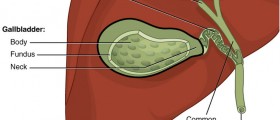

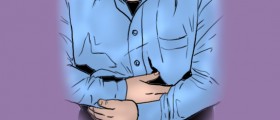





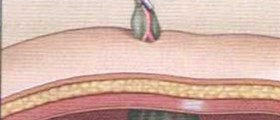



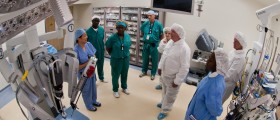
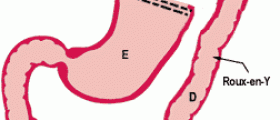
Your thoughts on this
Loading...